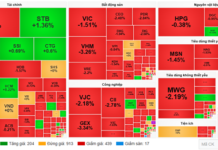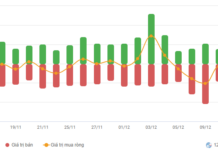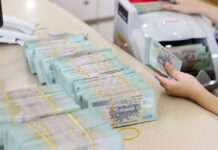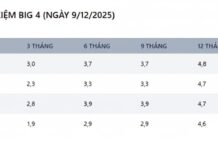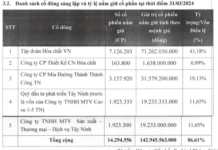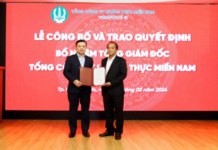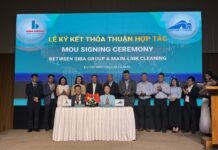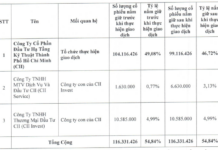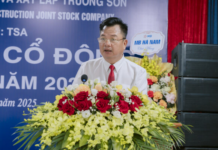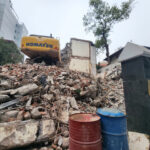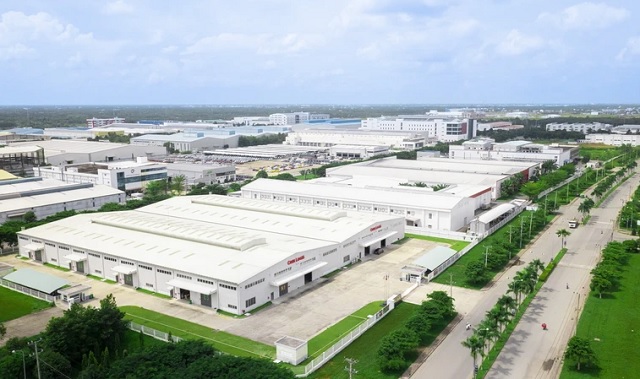
Long Hau Industrial Park (Can Gioc). (Photo: Minh Hung/VNA)
|
The anticipated arrival of a new wave of foreign investment into Vietnam is generating increased demand for leasing space in industrial zones and export-processing zones.
The Ministry of Planning and Investment is proposing the development of legislation, tentatively titled the Law on Industrial and Economic Zones, to facilitate Vietnam’s development of large-scale industrial zones that meet the requirements of supply chain development as well as green economic growth in line with the current orientation.
Focus on Investment Attraction
According to a report by the Ministry of Planning and Investment, the country currently has 416 industrial parks and more than 1,000 industrial clusters. Industrial parks account for approximately 50% of the country’s export turnover and make a significant contribution to the state budget.
Le Thanh Quan, Director of the Department of Economic Zones Management at the Ministry of Planning and Investment, said that industrial parks are a focal area for attracting domestic and foreign investment projects and have become the destination of many of the world’s leading corporations.
The development of industrial parks contributes to the transfer of modern technology, the development of a green investment ecosystem, the creation of a high-quality workforce, and the resolution of a substantial number of employment issues. This has significant implications for promoting economic growth and improving the quality of social welfare.
However, despite these achievements, according to Dr. Phan Huu Thang, former Director General of the Foreign Investment Agency and Chairman of the Vietnam Industrial Zones Finance Association, there are still a number of shortcomings in the development and management of industrial parks, such as:
• The planning of industrial park development in certain localities is not aligned with development needs and the capacity to attract investment capital.
• The model for the development of industrial parks is slow to change, and there is a lack of green industrial parks, urban-service industrial parks, etc.
Regarding the development of green industrial parks to eliminate waste products and minimize adverse environmental impacts, there are still certain difficulties, even though the government has issued Decree 35/2022/ND-CP dated May 28, 2022, regulating the management of economic zones and industrial parks with clear definitions of various types of industrial parks, including export processing zones, supporting industrial parks, specialized industrial parks, eco-industrial parks, high-tech industrial parks, expanded industrial parks, and industrial sub-zones, etc.
 Industrial real estate in Phu My 3 Industrial Park, Phu My Town, Ba Ria-Vung Tau Province. (Photo: Hong Dat/VNA)
|
Moreover, while regulations and guidelines for the development of industrial parks have been issued, they are scattered across numerous other legal documents in relevant codes of law (land, construction, environment, etc.), and administrative procedures also need further refinement. This will enable the accelerated development of various types of industrial parks in line with the green and high-tech development orientation.
Based on feedback from several localities and businesses, it has been observed that they strongly support eco-industrial parks, a circular economy, and environmental protection for sustainable development, but in practice, this is no easy task. Nevertheless, investment in industrial parks currently faces numerous challenges due to complex and overlapping legal regulations.
Economic experts believe that it is necessary to “codify” Decree 35/2022/ND-CP, and accordingly, the regulations on eco-industrial parks need to be clearly defined and detailed in the new law to encourage businesses to invest in industrial parks. Simultaneously, this will encourage localities to transition existing traditional industrial parks into eco-industrial parks.
Welcoming High-Quality Investment Flows
Deputy Minister of Planning and Investment Do Thanh Trung said: “The Ministry of Planning and Investment is proposing the development of legislation, tentatively titled the Law on Industrial and Economic Zones.” According to the proposal, the Ministry of Planning and Investment has outlined key policy groups within the content of the law to promote the development of industrial and economic zones, meeting the current requirements of the country’s industrialization and modernization. This will also respond to new global trends, such as the green economy, the digital economy, the circular economy, and green energy.
The first group of policies provides support for projects implementing industry linkages and industry clusters within the scope of industrial and economic zones. The second group of policies provides support for specialized, highly specialized, and unique types of industrial parks. As such, it will be necessary to establish criteria and regulations for the selection of secondary investments in these industrial parks to ensure the development objectives of specialized industrial parks are met.
Additionally, the third group of policies focuses on the development of modern, smart industrial parks, and attracting new investment sectors such as the digital economy, green economy, chips, semiconductors, materials industry, innovation, etc. This is complemented by a focus on new energy trends, particularly green energy and renewable energy in these regions.

Long Giang Industrial Park viewed from above, located adjacent to the Trung Luong Expressway, Ho Chi Minh City. (Photo: Lam Nguyen/VNA)
|
Furthermore, the group for the development of integrated urban areas encompasses industrial parks combined with the development of urban areas and services; in which, industry is the primary objective but also facilitates job creation and the promotion of industrialization, modernization, and economic restructuring.
In addition, the Ministry of Planning and Investment has proposed policies and regulations for additional incentives related to taxes, fees, fiscal policy, capital, etc., especially for businesses within the ecosystem operating in specialized industrial parks. This will ensure the encouragement of business investment and the development of these industrial parks.
According to Dr. Phan Huu Thang, former Director General of the Foreign Investment Agency, in order to increase the number of new-style industrial parks and green industrial parks to attract high-quality investment flows, the financial potential and implementation capacity of businesses are of paramount importance. Within the country, there are a number of large enterprises with sufficient potential and capacity to construct the infrastructure of modern, green industrial parks that meet the advanced standards of major corporations.
Deputy Minister Do Thanh Trung believes that with the six proposed policy groups within the content of the law, the Ministry of Planning and Investment aims to adjust, amend, revise, and supplement regulations related to administrative procedures.
“This is one of the trial measures to introduce new regulations to facilitate greater convenience for investors in this sector while also drawing on experience to improve the investment and business environment throughout the country,” affirmed Deputy Minister Do Thanh Trung.
Thuy Hien



